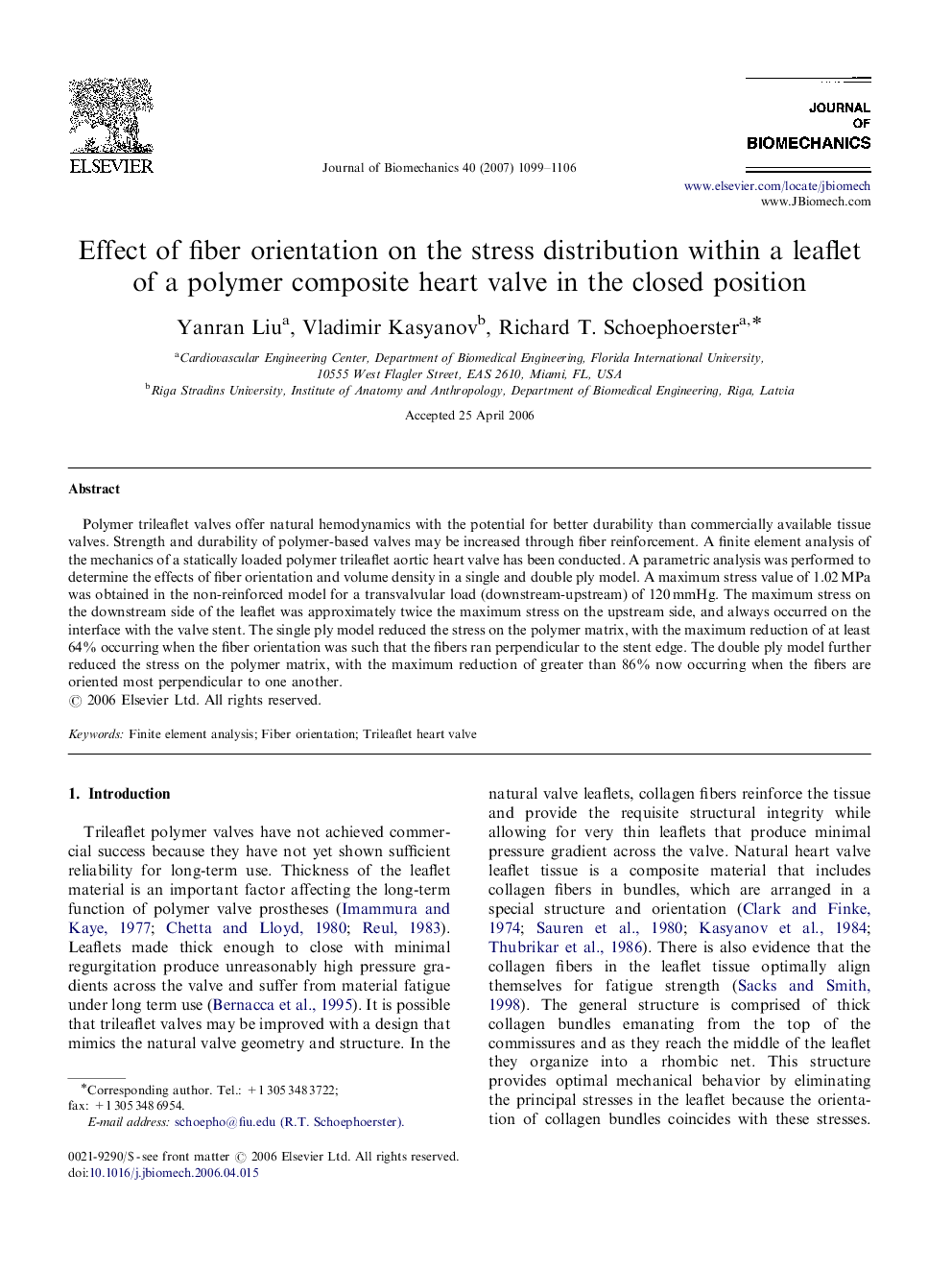| Article ID | Journal | Published Year | Pages | File Type |
|---|---|---|---|---|
| 875342 | Journal of Biomechanics | 2007 | 8 Pages |
Polymer trileaflet valves offer natural hemodynamics with the potential for better durability than commercially available tissue valves. Strength and durability of polymer-based valves may be increased through fiber reinforcement. A finite element analysis of the mechanics of a statically loaded polymer trileaflet aortic heart valve has been conducted. A parametric analysis was performed to determine the effects of fiber orientation and volume density in a single and double ply model. A maximum stress value of 1.02 MPa was obtained in the non-reinforced model for a transvalvular load (downstream-upstream) of 120 mmHg. The maximum stress on the downstream side of the leaflet was approximately twice the maximum stress on the upstream side, and always occurred on the interface with the valve stent. The single ply model reduced the stress on the polymer matrix, with the maximum reduction of at least 64% occurring when the fiber orientation was such that the fibers ran perpendicular to the stent edge. The double ply model further reduced the stress on the polymer matrix, with the maximum reduction of greater than 86% now occurring when the fibers are oriented most perpendicular to one another.
